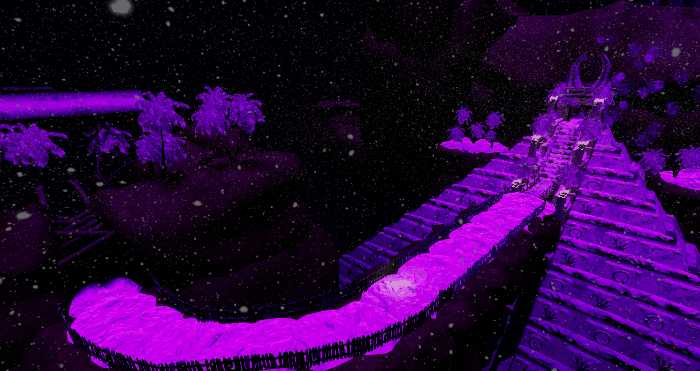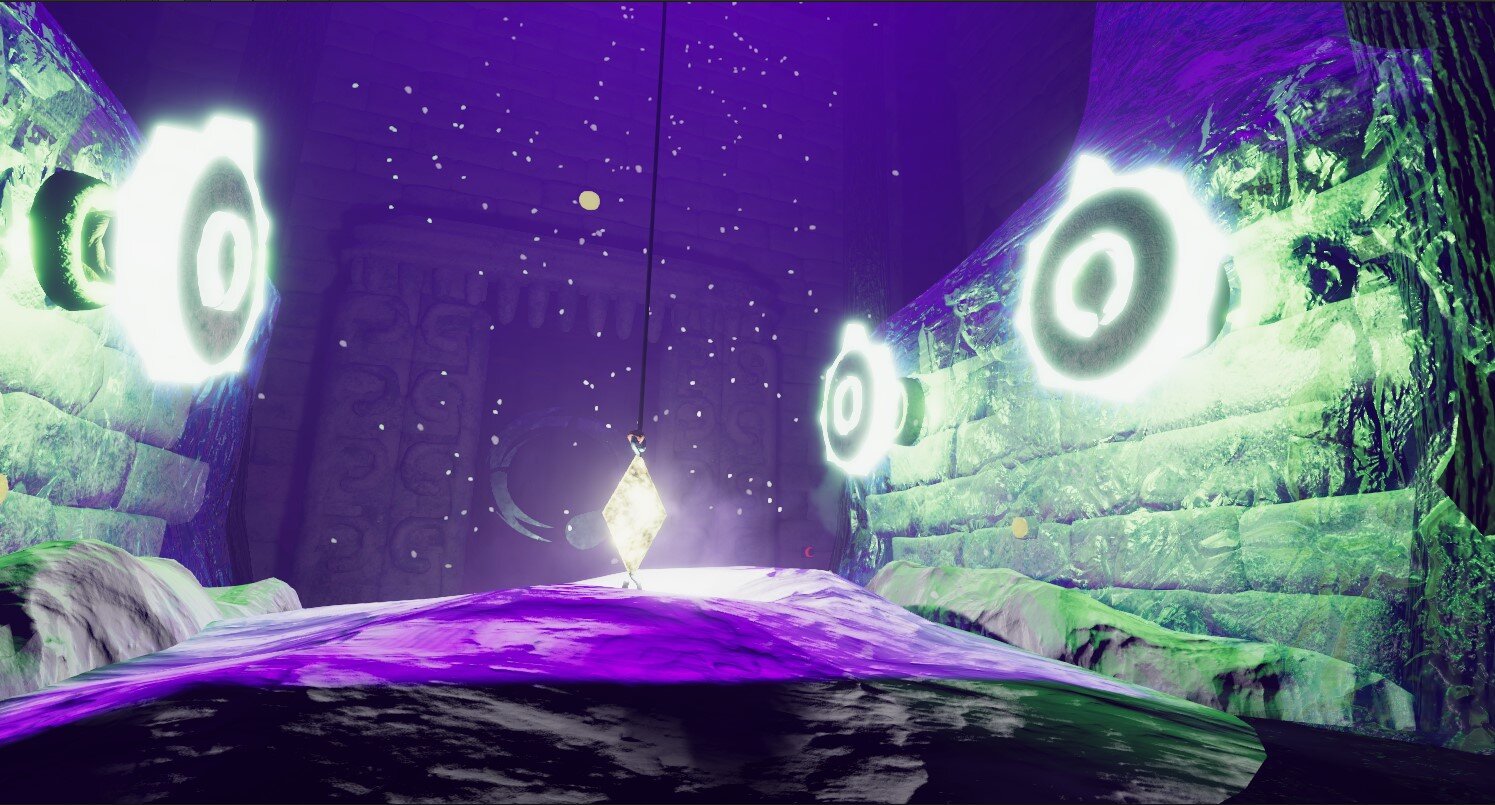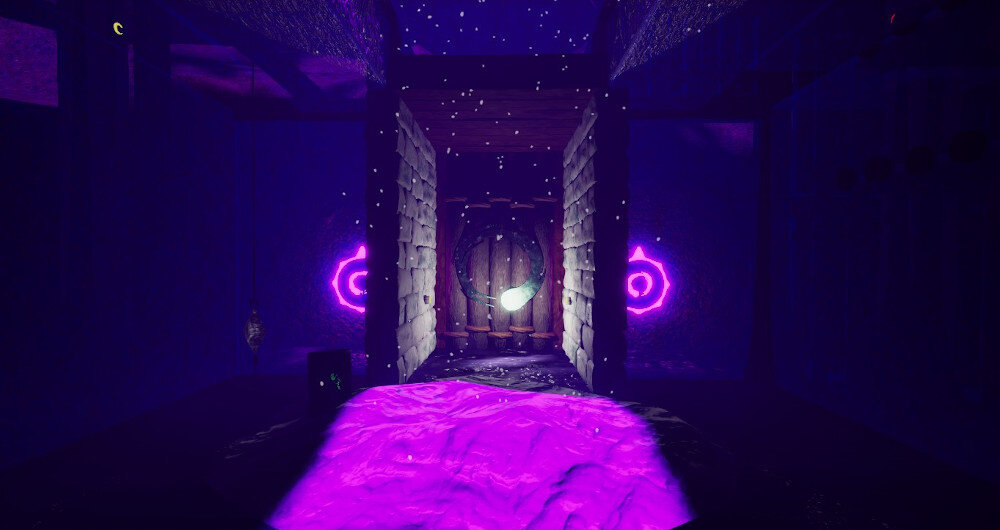Valley of Shadow Devlog #3
/Welcome back to another devlog! If this is the third devlog of ours that you’re reading, then you are a true fan and I’d like to shake your hand.
The month of May brought the following improvements to the game:
Vault of Force - Floor 4
Vault of Force Playability Pass
New Blog Post: Making a Fireball Puzzle
Vault of Force - Floor 4
The fourth floor of the Vault of Force is 80% complete. Most of the individual rooms are complete, along with all of the connecting hallways. There are two rooms left, along with the final narrative room (which marks the end of the Vault) and its accompanying puzzle - which we are calling “The Ancient Scrolls”. Can you guess what game it’s based on?
This floor is unique because it adds a few exterior shots. As you move from room to room you actually end up outside for a bit, which lets us play with distant landscapes and massive amounts of snow (which also means massive amounts of optimization - we gotta keep those particles in check!). As always, here are a few screenshots showcasing some of the stunning environments Anth has put together!





Vault of Force Playability Pass
Now that Anthony is putting the finishing touches on the art, I was able to make a “Playability Pass” through the entire Vault. During this pass, I focused on making sure things work, and that all critical bugs are taken care of. The outcome of this pass is that the Vault is actually playable, with all the art in place. It took a bit of work, mostly due to the redesign of the entire Vault that I alluded to in last month’s post.
The technical innards of the Vaults are pretty fickle. Hallways have to be connected just so or else everything will break. The reason is that entering a hallway is a pretty important event - it simultaneously shuts the door behind you, completely turns off the room you were just in, and turns on the upcoming room. It does this as an optimization; there’s no sense in wasting cycles on rendering & logic updates of rooms that you aren’t currently in. This could partially be handled with occlusion culling - and in fact we do add in occlusion culling eventually - but this is a much easier and quicker optimization. It requires the hallways to be hooked up properly, however, and during the redesign a number of the hallways broke, so they had to be reconnected.
In addition to hooking things back up, I made some pretty drastic changes to a few things in the Vault. These include, but are not limited to:
Glowing Force Sensors when Force Missile is held in. A lot of sensors were difficult to see, due to the Vault being rather dark and a lot of ice being in the way. With the sensors glowing on their own, it largely eliminates any issues with finding them.
Adding pathfinding to hallways. We used to have logic that would wait until you entered a room to turn on Force Sensors, and simultaneously lock you in that room. Two big reasons for this were performance (more pathfinding nodes result in an exponential performance hit, not linear) and puzzle solutions (casting from inside the hallways gives you more locations you can stand when casting, increasing the number of potential solutions). It turns out, neither of these are really a problem. We can easily fine-tune the number of pathfinding nodes in each room to be very small. And casting from inside a hallway is effectively the same as casting from the entrance to the room. So there’s no reason to lock down the sensors! This lock-down mechanic now joins the long list of things-I-implemented-prematurely-and-ended-up-not-needing. It’s in good company, I’m sure.
The good news about all of this is that the Vault is actually playable now, from start to finish. I’ve a few more tweaks to make before I get to expand playtesting, hooray! I’m going to stop promising playtesting in “the next few weeks” and instead will just say, it will be available Soon™.
New Blog Post: Making a Fireball Puzzle
I recently wrote a blog post on my process of making a puzzle, from design to implementation to testing and refinement. It focuses on a specific puzzle for the Fireball spell, and includes a lot of what I’ve learned about building puzzles so far. If making puzzles is something that interests you, click here to check it out and let me know what you think!
That’s all folks! As always, thanks for reading and I hope to have some more exciting updates for you next month.



